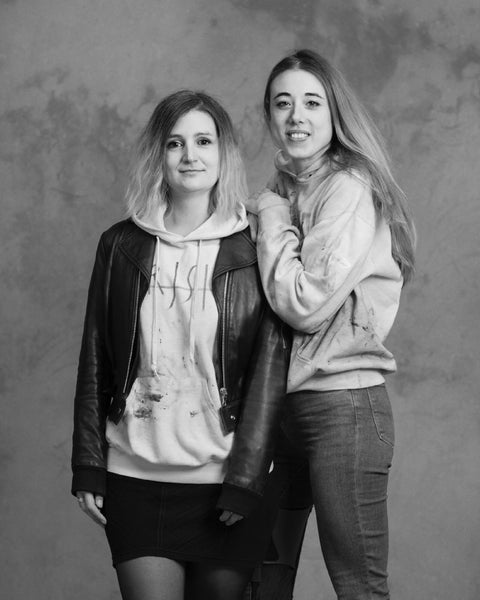KRJST studio is a Belgian artist duo founded in 2012.
The duo began working in the fashion industry for almost 3 years after earning a master's degree in Cambre Mode. In 2015, they immersed themselves in the art and design sector due to key meetings and the need to put creativity and art at the center of their practice again.
Sins, the duo creates sumptuous and monumental hand-embroidered tapestries.
Emotions, storytelling and technical expertise are all central to their creative process.
The tapestries are mainly made for architectural purposes and art collectors.
Together with Simon Tentoon they launched in 2020 a line of collectible design made with their woven textiles.
KRJST Studio has a triangular structure composed by Justine de Moriamé, Erika Schillebeeckx, and their Art. The whole forms a magnetic field of experimentation which attracts and digests its surroundings. Four hands, two souls, and four eyes are tuned together to invoke a collective memory, to alter it, and to pass it on.
The weavings serve as witnesses of their era, survivors of a narrative, oscillating between past and future, embodying our roots, expanding the present. They can be apprehended with the alchemical unit of measurement: the time required to...
KRJST puts colors to express what words fail to describe; they paint with weaving threads imaginary landscapes of a poetic, calm, and yet tormented realm, the chaos where emotions are born.
These weavings are the result of research anchored in our time and of a constant development around textures, materials, yarns, colors, drawing, painting,3D drawing, as well as chemical research on conductivity.
The weaved pieces stem from a research work that is rooted in our time, mixing influences of classical and modern art with traditional techniques, which are then adapted and deformed with new technology in order to reinvent a format, tapestry, and push forward its visual and formal boundaries.
By giving itself time for creation, KRJST takes an intimate awareness of time both as the place of change and a place of permanence and as a place of reconciliation between traditional and ritual technique and experimental and modern technique, making dialogue between laborious work of weaving and the moment of the gesture. The binary relationship between the jacquard and the processor is already evocative in itself. Such an oscillation between the past and the future between craftsmanship and technology, reflecting the importance of keeping our roots and yet living with the times.


